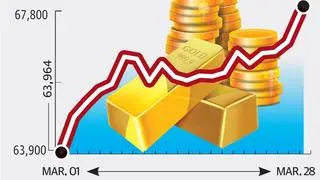The greatest advantage of trading options is that it allows you to take positions based on your expectation of an underlying’s volatility without a directional view of the underlying’s price movement. But why bet on volatility? This week, we discuss why volatility trades are unique and two important types of volatility trades.
Factor bet
A factor represents a unique source of return that is not strongly correlated with other factors. Empirical research shows that volatility is a factor that does not have strong correlation with, say, value and momentum — two popular factors on which investment products are available for retail investors. This provides a good reason to trade volatility.
Sometimes, traders may have a strong view on volatility without a directional view of the underlying. Market reaction during the union budget presentation, for instance. Is the market likely to react favourably or otherwise to the union budget? It is the uncertainty surrounding the outcome of an event that sets the stage for typical volatility trades. Note that using exchange-traded options creates near-pure bets on volatility, as option prices are also impacted by their underlying’s price movements, time to expiry, and interest rate.
Two types of volatility trades are directional volatility bets and volatility arbitrage. Consider a long straddle, a directional volatility trade that bets on volatility of the underlying exploding (increasing). This involves simultaneously going long on at-the-money (ATM) call and an ATM put on an underlying. This is the closest to setting up a pure volatility bet because the position has near-zero delta; the delta of the ATM call is close to 0.50, whereas the delta of an ATM put is close to minus 0.50. Near-zero delta means the position will gain if volatility explodes, whether that results in the underlying moving up or down. Note that delta captures the approximate change in the option price for a one-point change in the underlying price.
Betting on the relative implied volatility across expiry dates is a type of volatility arbitrage trade. For instance, going long on the next-week Nifty 18200 call and shorting the near-week Nifty 18200 call when you believe that implied volatility is relatively high this week compared with the next week. Another strategy is to bet on implied volatility against realised volatility, where the latter represents the actual volatility of the underlying through the life of the option. Here, you go short on an ATM call with a delta-hedged long position on the underlying. This position is set up when current implied volatility is high and the realised volatility of the underlying at expiry is expected to be low.
Optional reading
Directional volatility trades have positive vega and gamma. It is because of the positive gamma that increase in volatility leads to increase in option prices. Volatility arbitrage trades are set up to capture gains from time decay as implied volatility is a component of time value of an option that must become zero at option expiry.
The author offers training programmes for individuals to manage their personal investments









Comments
Comments have to be in English, and in full sentences. They cannot be abusive or personal. Please abide by our community guidelines for posting your comments.
We have migrated to a new commenting platform. If you are already a registered user of TheHindu Businessline and logged in, you may continue to engage with our articles. If you do not have an account please register and login to post comments. Users can access their older comments by logging into their accounts on Vuukle.